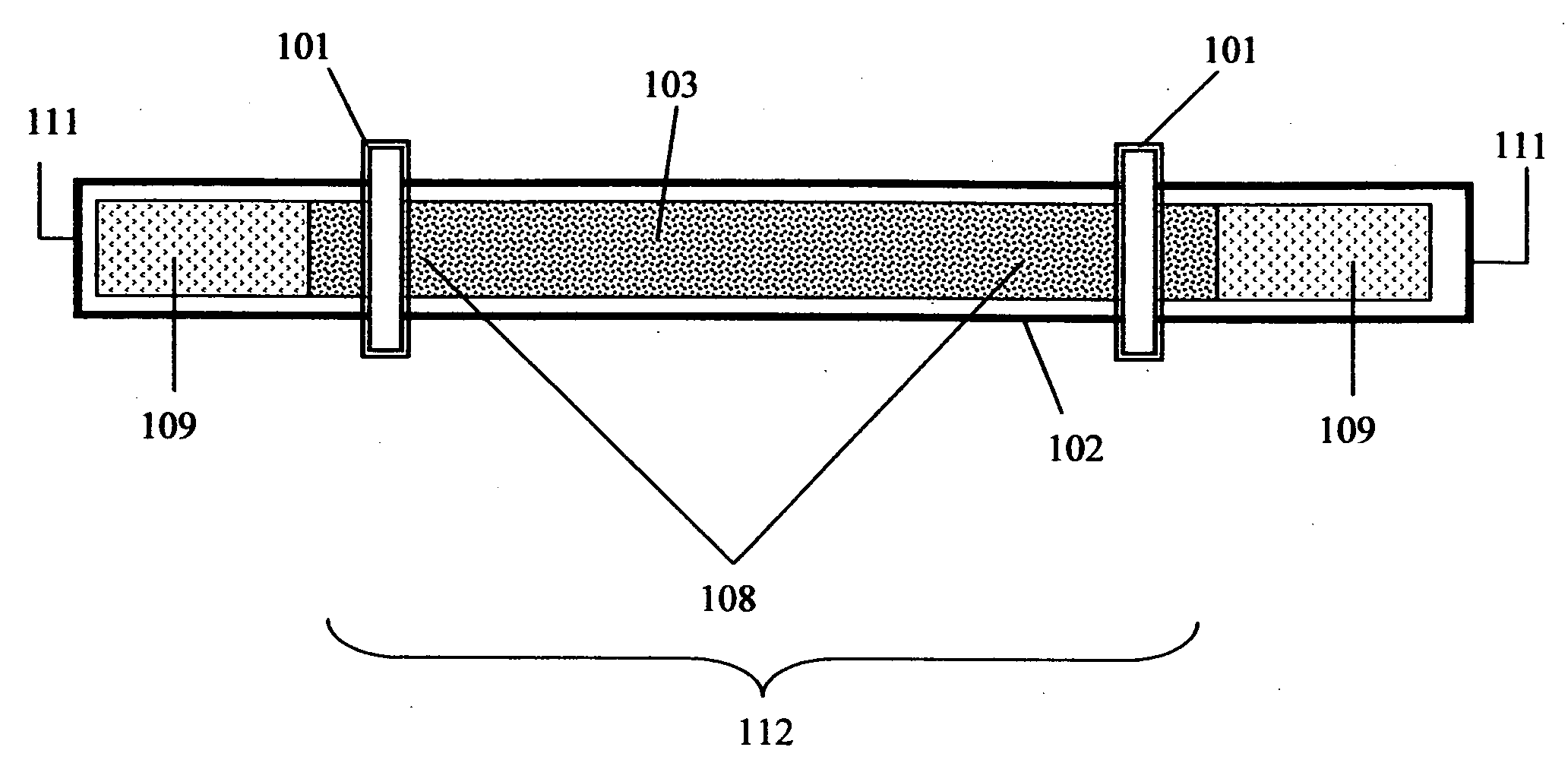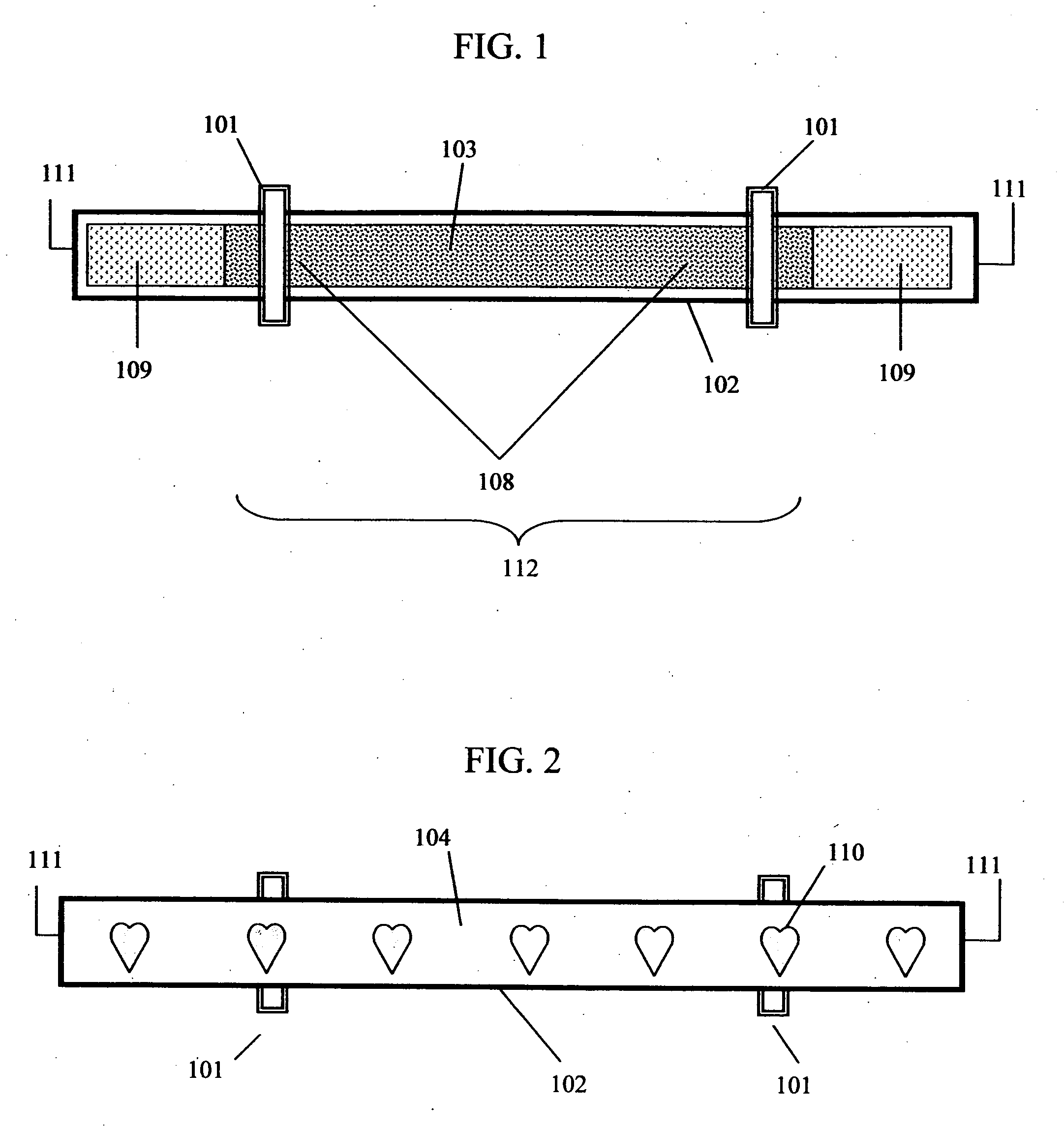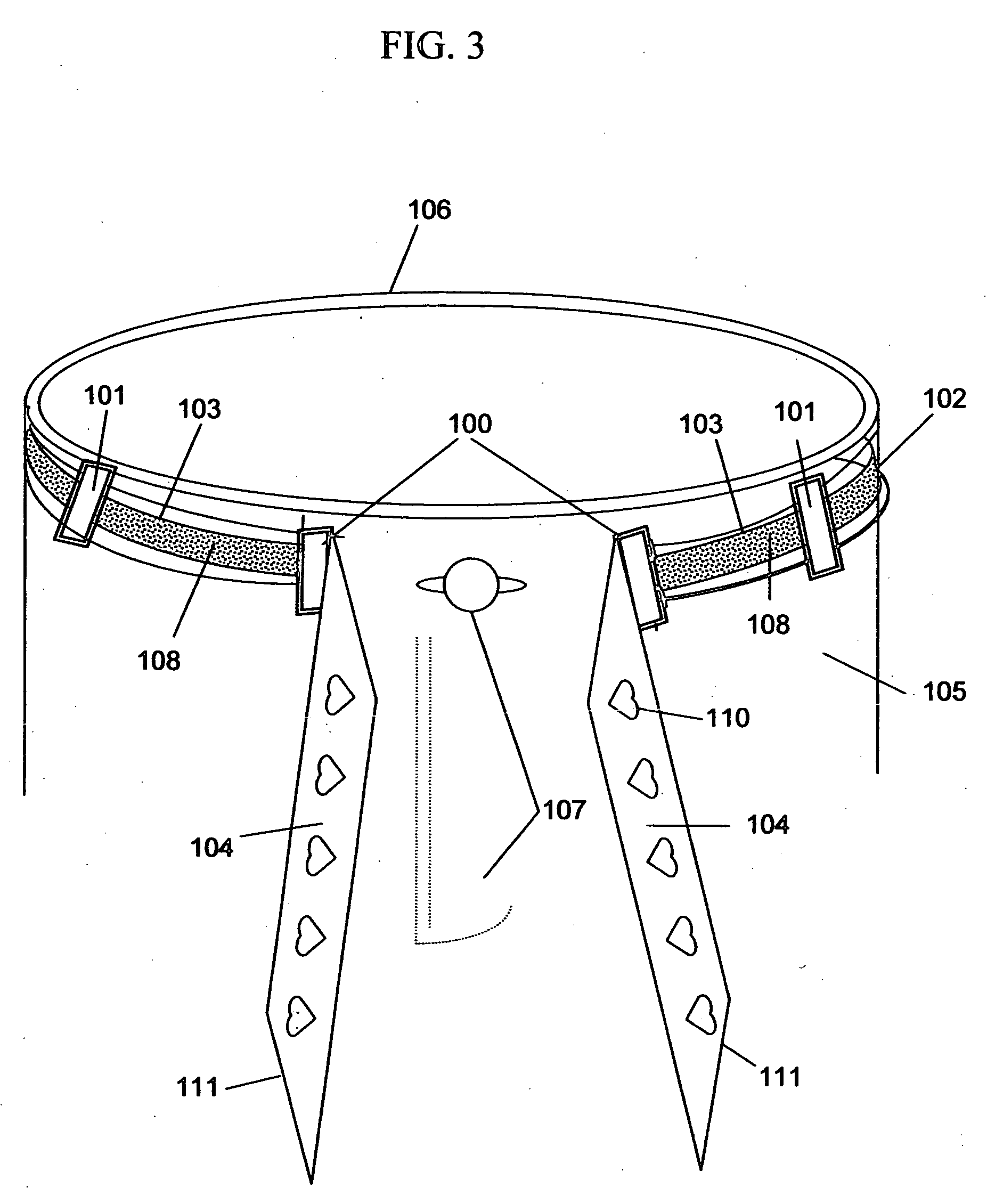Open front dual attachment belt
- Summary
- Abstract
- Description
- Claims
- Application Information
AI Technical Summary
Benefits of technology
Problems solved by technology
Method used
Image
Examples
Embodiment Construction
[0022]Referring to FIG. 1 and FIG. 2, the present invention is an elongated, flat, strap 102 made of any suitable material with an exterior surface 103, an interior surface 104 a terminal first end portion 111, an opposing second terminal end portion 111 and an elongated medial portion 112. The belt 102 is intended to be visible and worn on the exterior of a garment for use with trousers, skirts, dresses or like garment that contains a plurality of external belt loops 101 around the waistband 106. Both opposing terminal free ends 111 of said belt 102 have identical methods for attachment 109 such as Velcro (trademark) hooks, clips, snaps, magnets, buttons, etc. or like engaging elements attached lengthwise approximately 1-10 inches in length to the exterior surface 103. The exterior surface 103, is defined as the side of the belting material that is facing away from the waistband 106 of the garment 105. The corresponding mate to the terminal free ends adhesive material (108) is atta...
PUM
 Login to View More
Login to View More Abstract
Description
Claims
Application Information
 Login to View More
Login to View More - R&D
- Intellectual Property
- Life Sciences
- Materials
- Tech Scout
- Unparalleled Data Quality
- Higher Quality Content
- 60% Fewer Hallucinations
Browse by: Latest US Patents, China's latest patents, Technical Efficacy Thesaurus, Application Domain, Technology Topic, Popular Technical Reports.
© 2025 PatSnap. All rights reserved.Legal|Privacy policy|Modern Slavery Act Transparency Statement|Sitemap|About US| Contact US: help@patsnap.com



